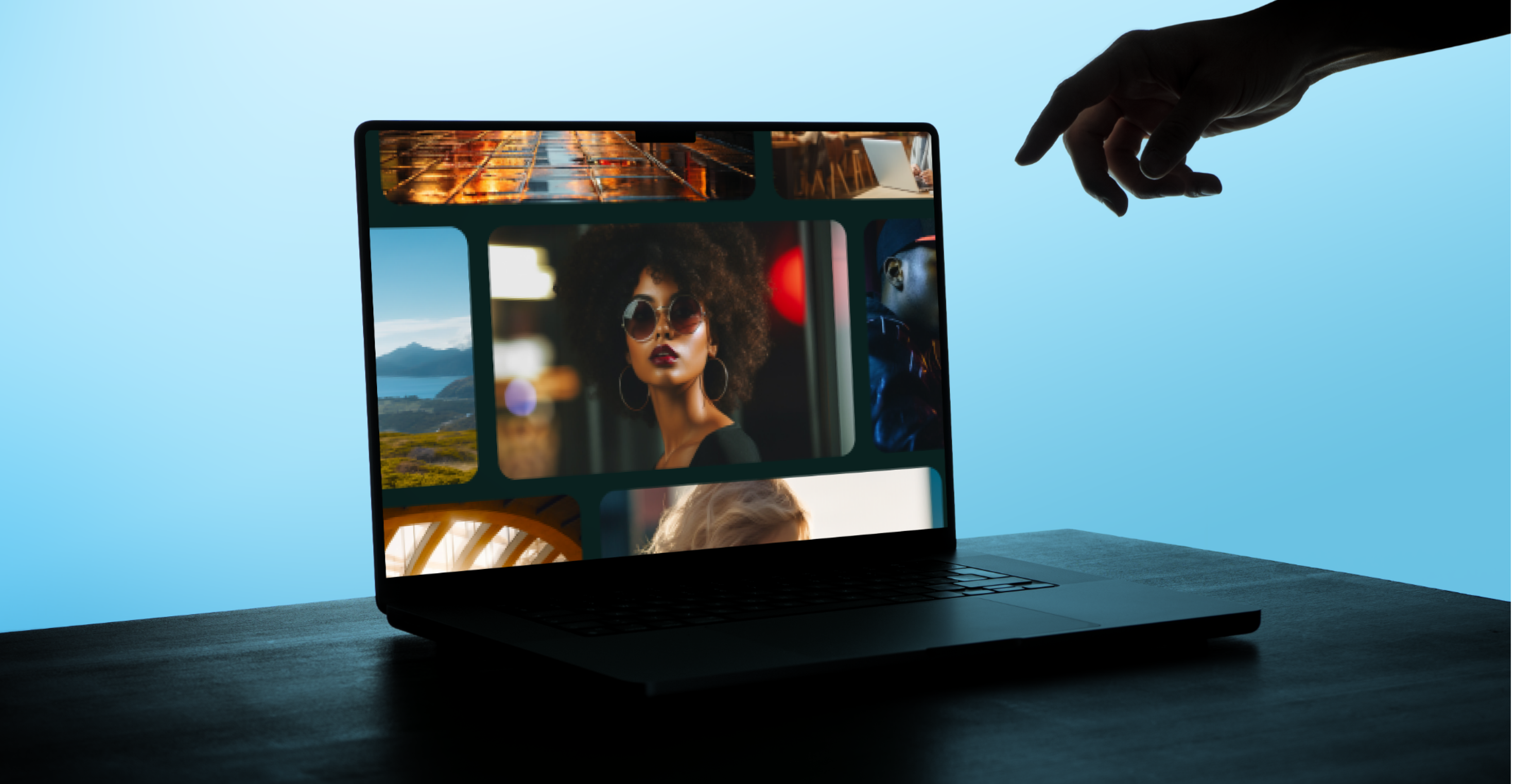
“Just do it.” “1,000 songs in your pocket.” “Got milk?”
These iconic ad copy examples are proof that a few words can make a huge impact. But as any marketer who’s tried their hand at copywriting can tell you, crafting click-worthy ad copy is no simple feat. According to Facebook, you only get about 3 seconds to grab people’s attention with an ad so you need to make every word count.
How do you do this when you’re not exactly a pro copywriter? Our advice: learn from the best.
In this post, we’ll go over:
- What is advertising copy?
- How ad copy works and how it’s used
- Our best ad copywriting tips from advertising experts
What is ad copy, anyway?
The old-school definition of advertising copy is writing that is designed to sell. However, in today’s digital landscape, many marketers are using ads for more than sales. For example, maybe you’re trying to grow your email list or get sign-ups for your next event. There’s often a whole marketing funnel in place with multiple touch points along the way that require some creative and compelling ad copy.
A more modern definition of ad copy is writing that drives action. Ad copy should always encourage your audience to do something and take that next step in their customer journey with your organization.
TIP: Think about the messaging and copy your audience is seeing along their journey, and make sure that these messages align and support one another. Of course, you don’t want to be spoon feeding your readers the same ad copy over and over again, but they should align to your overall brand and mission.
How ad copy works and how it’s used
Ad copy typically has three main components:
- A headline designed to hook a reader in and compel them to read the rest of the ad.
- Body copy, which is the text that appears below the headline that provides more insight into the offer’s purpose and value.
- A call-to-action, which is a phrase used at the end of an ad that can drive various actions depending on the ad’s goal. Words like “sign up,” “learn more” and “request a demo” are all common calls-to-action.
You can of course find ad copy in flyers and television commercials, but in the digital advertising world, it’s most often used for website homepages, social ads, email campaigns and landing pages.
Our top 8 ad copywriting tips
There’s no one-size-fits-all approach to writing ad copy, but there are some ad copy best practices that you can follow to improve your ad results. Here are some of our favourite tips from some of the best in the business.
1. Optimize your headline
Did you know that 8 out of 10 people only read headlines? This is why Copyblogger founder Brian Clark recommends marketers spend roughly half of their ad writing time on the headline alone. According to Brian, “the better the headline, the better your odds of beating the averages and getting what you’ve written read by a larger percentage of people.”
The key to writing a great ad headline is focusing on the four U’s:
- Be useful to the reader
- Provide them with a sense of urgency
- Convey the idea that the main benefit is somehow unique; and
- Do all of the above in an ultra-specific way
This copy from an Uber Eats landing page really checks all the boxes. A simple question (“Hungry?”) communicates both urgency and the service’s usefulness to the reader, while the following sentence (“You’re in the right place.”) explains the main benefit.
Source: Uber Eats
Effective ad design is more than just making something look pretty. We dive into the complex world of ad creative in our newest guide! Check it out—it's free.
2. Add social proof
Social proof is a psychological phenomenon where people imitate the behaviors of those around them. For example, if you’re a marketing manager at a SaaS startup and see that other people in similar roles are using a certain tool or software, you'll likely feel compelled to try it out too. There are many different types of social proof — user testimonials, reviews, customers or subscribers numbers, just to name a few — but the concept works by building trust.
Many people are naturally skeptical of advertising claims, but we’re much more likely to believe in an offer’s value if it’s endorsed by people we trust. In fact, according to a Word of Mouth Report by Chatter Matters, 83% of consumers say that a friend or family member’s recommendation would make them more likely to purchase a product or service.
This pop-up ad from Marketing Examples illustrates this concept perfectly. In this example, they use subscriber numbers, pictures and reviews to illustrate the value of subscribing to a newsletter. If 44,000 other people signed up, then it must be good, right? This is the power of social proof.
Source: MarketingExamples
3. Know your audience
You might think you know who your ideal customer is and what they want from you but if you haven’t actually talked to them, then you’re working off of assumptions and we all know what happens when you assume.
Before you open up that Google Doc, follow the advice of advertising copy legend David Ogilvy and make sure you know:
- Who you’re writing for
- How that person thinks
- What that person needs
The best way to do this is to simply talk to your target audience. Conducting market research and customer interviews is the best way to get to know your potential customer inside and out and figure out how to serve them.
Case in point: the below Facebook ad copy from project management tool Asana. They could’ve gone in a more general approach to explain how their tool helps its users manage projects, but this ad copy speaks more directly to the customer’s current pain points: working from home and their insecurities regarding team management and collaboration in this ‘new normal’.
If you’re creating geo-targeted ads, you could also take this advice a step further and add location-specific references (e.g. ‘Calling all Toronto plant moms!’) to boost your ads’ relevancy.
4. Make the ‘why’ crystal clear
Once you’ve got your headline down, your next step should be to communicate the ‘why’ of your offer. You can start by considering the following questions:
- Why should your customer buy from you and not your competitor?
- How will your offer improve their lives?
- Why should they be interested?
- Why should they buy your offer now and not later?
- Why should they trust you?
Another way to look at this is to focus on benefits, not features. As Basecamp founder Jason Fried once tweeted: “‘Here's what our product can do’ and ‘Here's what you can do with our product’ sound similar, but they are completely different approaches.”
When you look at this copy from a Monday.com landing page, we can see this advice in action.
- Right away, they’re answering the question of “Why should I buy from you?” by showing how their product stacks up against their competitor Asana and how it can improve their lives (“minus the complicated setup,” “get started in minutes”).
- The social proof (“Join more than 100,000 dynamic teams”) builds trust.
Source: Monday.com
5. Have one goal
You know the saying, “If you try to appeal to everyone, you’ll appeal to no one”? The same rule applies to your ad copy. If you’re trying to achieve too many goals at once (e.g. “Download our lead magnet and book a free demo!”), you’ll end up complicating your message and confusing your audience.
Your overall campaign goals should influence your ad copy and creative.
For example, if your ad’s purpose is to drive event sign-ups, then all your copy should be focused around this goal. As you can see in this Facebook ad from Spotify Advertising, the image copy, ad text and call to action are all written to drive one key action: generating sign-ups for their Spotify Ad Studio service.
6. Ditch the jargon
Buzzwords and industry terms like “customer acquisition,” “alignment” and “synergy” will only muddle your message. When it comes to writing ads, simple copy sells. Aim to get to the point quickly and conversationally. One of the best ways to avoid jargon is to go back to your market research and customer interviews and take note of how your customer defines their problem and ideal solution in their own words.
TIP: Asking customers why they purchased or subscribed to your product/service will often bring about the obvious answers: price, quality, speed and so on. You’ll need to do some extra digging to get to the real gold—how your product/service makes their lives better!
Kajabi is one of the online course platforms that stands out for being particularly comprehensive and technical, but their homepage website copy speaks clearly and simply to their target customers. They do use a few industry terms (e.g. plugins, integrations), but they’re words that their potential customers would instantly understand.
Source: Kajabi
7. Kill your darlings
This is an old piece of writing advice that’s pretty much a fancy way to say “edit your work.” Brian Clark recommends writers cut down on their use of adjectives and adverbs as “they just take up space and dull your message.”
Another practical way to look at this comes from author George Orwell, who says you should always use:
- A word instead of phrase
- A phrase instead of a sentence
- A sentence instead of paragraph
- A paragraph instead of a page
This DoorDash website header only has a heading and some calls-to-action (“sign in,” “sign up,” “enter delivery address”) but they’ve clearly communicated their message without any extra fluff.
Source: Doordash
8. Marry your copy and creative
Try to picture a Coca-Cola ad without their trademark cans, bottles or the iconic red and white logo. It would be pretty weird, right? This is why you need to make sure your ad copy aligns with your visuals.
Your copy needs to relate and work with the surrounding creative. They support each other to better convey the message and drive action. If your audience can’t quickly and easily understand what you’re trying to tell them and what you want them to do, you’ll lose them.
This ad from HeyOrca is an example of what not to do. While the ad copy is pretty clear, the blue and pink abstract background doesn’t do much to support the message. Showing a photo of the software in action or a social media manager at work would have made it immediately clear to readers what the ad is about.
Ad copy is an essential part of your ad creative so it’s important that you treat it as such. Ultimately, you should have two goals with your ad copy: simplicity and clarity. Simple and clear copy builds that highly-coveted ��“know, like and trust” factor which ultimately leads to more conversions.
Lastly, keep in mind that these tips and examples are just the starting point. Once you land on some copy that you love, make sure you test out different wordings and placements within a creative to find out which copy is the most effective for your brand.












